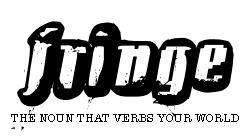
My boyfriend and I recently became engaged, and now we are preparing to purchase an engagement ring for me. (Who knew I'd want one so badly?) The only problem is that we don't want to begin our marriage by feeding the bloody and violent diamond trade.
John Ruskin said it best about glass beads in The Stones of Venice:
"The men who chop up the rods sit at their work all day, their hands vibrating with a perpetual and exquisitely timed palsy, and the beads dropping beneath their vibration like hail. Neither they, nor the men who draw out the rods or fuse the fragments, have the smallest occasion for the use of any single human faculty; and every young lady, therefore, who buys glass beads is engaged in the slave trade, and in a much more cruel one than that which we have so long endeavoured to put down."
Diamonds, I'm sure you'll be glad to hear, are much worse. But as with many things, there are degrees of badness.
Conflict Diamonds.
Since the movie release of Blood Diamond last year, awareness of conflict diamonds has risen in the US.
* Conflict diamonds come from mines controlled or seized by rebel groups in various countries. These groups use the profits from the stones to buy guns, foment rebellion, genocide, etc. As you can imagine, labor conditions for those mining these stones are the thirteenth circle of hell.
* In 2000, a bunch of diamond retailers got together and formed the Kimberly Process which is supposed to prevent diamonds from militia groups from being sold. However, the folks over at Amnesty International say this process is full of loopholes, like the fact that there's no independent oversight and that the process is entirely voluntary. The upshot is there's no way to know if a diamond is conflict-free.
Diamond Labor Conditions
Just because a diamond isn't a conflict diamond, doesn't mean it's slave-labor free.
* It is impossible to know if your gem was cut by child laborers. Also, many diamond mines have horrible conditions of labor.
Canadian Diamonds
Canada has recently begun mining diamonds. These diamonds are the only ones and the world that you can be certain are slavery-free. All Canadian diamonds come with certificates of authenticity naming the mine of origin from the Canadian government, and many have serial numbers or maple leafs lasered on to the diamond.
Here are some vendors of Canadian Diamonds:
Polar Bear Diamonds
Canadian Arctic Diamonds
These diamonds are available at many stores in the US, and I intend to ask for them specifically. If you're interested in other gemstones, you might try Fair Trade Gems.
Concerned about gold and platinum, which are even less regulated that diamonds? There is only one place to go -- Brilliant Earth, which offers Fair-Trade EVERYTHING.
I don't what kind of ring I will get, but armed with my research, I hope that I will be starting off my married life with a kiss, and not by participating in the slave trade.


2 comments:
Have you looked into vintage rings? That's what I ended up with (sapphire, actually!).
Of course, I begin from the place of admiring the practice of poverty, so I'm a little bit biased. With that, let me say I would find it pretty hard to justify the expense that a diamond or any precious stone entails. It's showiness is indicative of human vanity. It's uselessness is indicative of human stupidity.
The ring itself is a beautiful symbol of steadfast love. My advice: find a metal that doesn't rust or lose its polish too easily and make a ring.
Post a Comment